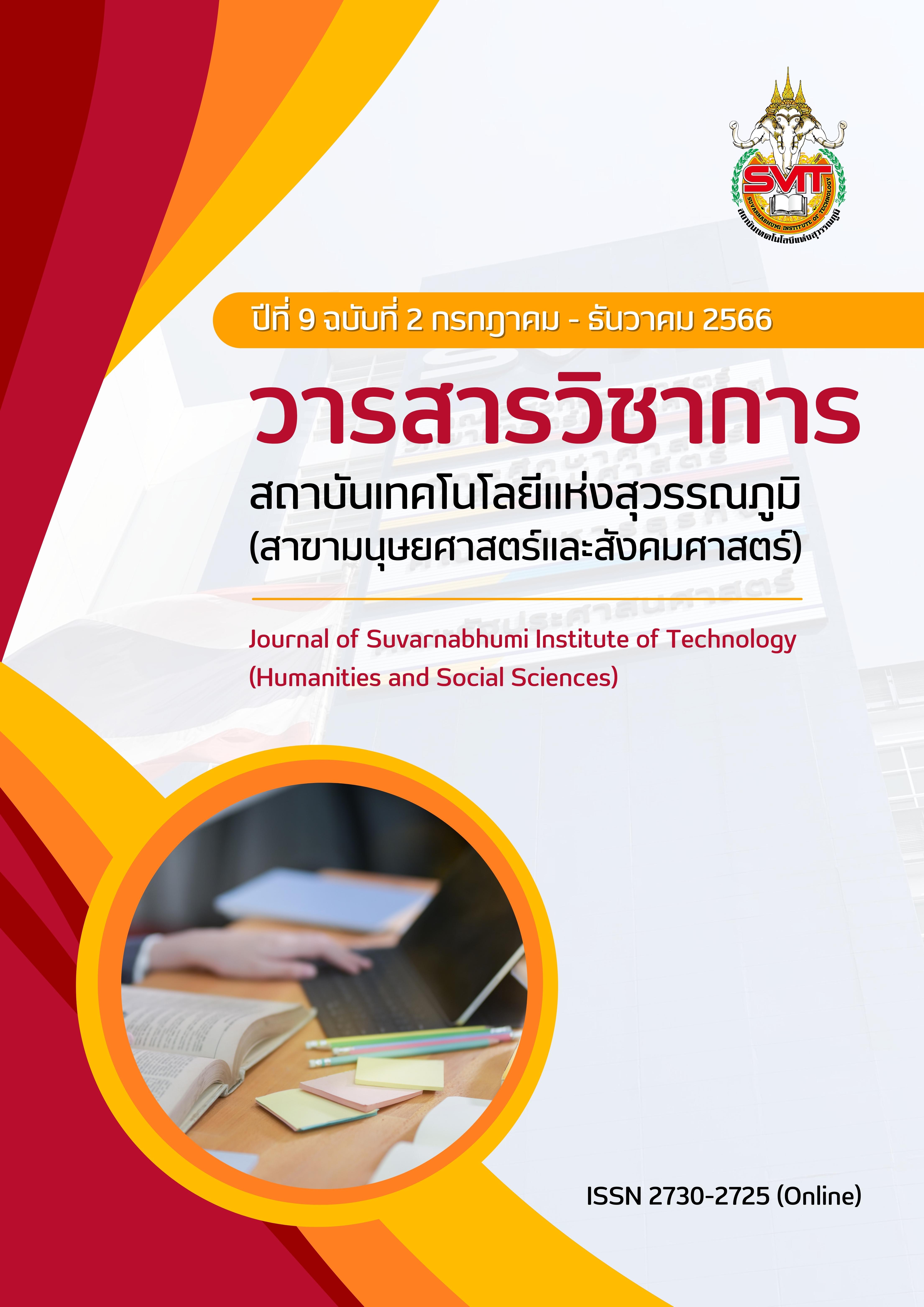FINANCE-SPECIFIC DETERMINANTS OF MERGERS AND ACQUISITIONS-TYPE FDI: FIRM-LEVEL ANALYSIS FOR THAILAND
Keywords:
Foreign direct investment, international investment, Mergers and Acquisitions, Intangible capital, cross border, FDIAbstract
This study explores finance-specific determinants that encourage domestic firms to receive foreign direct investment (FDI), especially those with a focus on mergers and acquisitions at the firm level, using firms operating in Thailand. Three main objectives of this study: to analyse whether firms receiving FDI differ from those that do not; to identify significant finance-specific determinants that make Thai companies more likely to receive foreign investment; and to explore the heterogeneity at the firm level and the impact of financial constraints. Our findings are: larger firms and younger firms draw more foreign attention and have a higher probability of receiving foreign investment, and companies with a larger amount of intangible assets attract more investment from abroad. The results point to the appropriate practical business policy of accumulating intangible assets with flexible formal/informal linkages with potential partners is key to promoting FDI. For policy implication, the government in emerging economies could secure business environment for scaling-up of business operations so that FDI is further promoted; also, the government could facilitate nurturing of firm-level intangible assets. On managerial implications, business companies in emerging countries could act on such government policies to pursue scaling-up of business activities based on intra company intangible assets.
References
Ang, J. B. (2009). Foreign Direct Investment and Its Impact on the Thai Economy: The Role of Financial Development. Journal of Economics and Finance, 33(3), 316-323. doi:10.1007/s12197-008-9042-6
Aw, Y. T., & Tang, T. C. (2010). The Determinants of Inward Foreign Direct Investment: The Case of Malaysia. International Journal of Business and Society, 11(1), 59-76.
Brahmasrene, T., & Jiranyakul, K. (2002). Recent Evidence of Foreign Direct Investment in Thailand. Journal of International Business Research, 1(1), 63-72.
Buch, C. M., Kensternich, I., Lipponer, A., & Schnitzer, M. (2014). Financial Constraints and Foreign Direct Investment: Firm-level Evidence. Review of World Economics, 150, 393-420.
Dunning, J. H. (1973). The Determinants of International Production. Oxford Economic Papers, 25(3), 289-336.
Dunning, J. H., & Lundan, S. M. (2008). Institutions and the OLI Paradigm of the Multinational Enterprise. Asia Pacific Journal of Management, 25, 573-593. doi:10.1007/s10490-007-9074-z
Esaku, S. (2020). Investments, Export Entry and Export Intensity in Small Manufacturing Firms. Journal of Industrial and Business Economics, 47, 677-697. doi:https://doi.org/10.1007.s40812-020-00156-9
Forssbaeck, J., & Oxelheim, L. (2008). Finance-Specific Factors as Drivers of Cross-Border Investment: An Empirical Investigation. International Business Review, 17, 630-641. doi:10.1016/j.ibusrev.2008.09.001
Fukao, K., Ito, K., Kwon, H. U., & Takizawa, M. (2008). Cross-Border Acquisitions and Target Firms' Performance: Evidence from Japanese Firm-Level Data. In T. Ito & A. K. Rose (Eds.), International Financial Issue in the Pacific Rim: Global Imbalances, Financial Liberalization, and Exchange Rate Policy (pp. 347-389). USA: The University of Chicago Press.
Garavito, A., Iregui, A. M., & Ramirez, M. T. (2014). An Empirical Examination of the Determinants of Foreign Direct Investment: A Firm-Level Analysis for the Colombian Economy. Revista de Economia del Rosario, 17(1), 5-31. doi:dx.doi.org/10.12804/rev.econ.rosario.17.01.2014.01
Hymer, S. H. (1976). The International Operations of Nation Firms: A Study of Foreign Direct Investment. Cambridge, MA, USA: MIT Press.
Kurtishi-Kastrati, S. (2013). The Effects of Foreign Direct Investments for Host Country's Economy. European Journal of Interdisciplinary Studies, 5(1), 26-39.
Lipsey, R. E. (2004). Home-and-Host Country Effects of Foreign Direct Investment. In Challenges to Globalization: Analyzing the Economics (pp. 333-382). Chicago, USA: University of Chicago Press.
Oxelheim, L., Randoy, T., & Stonehill, A. (2001). On the treatment of Finance-Specific Factors within the OLI Paradigm. International Business Review, 10(4), 381-398.
Pansuwan, A. (2018). Industrial Location Patterns Based on Foreign Direct Investment in Thailand After Trade Liberalization. Humanities, Arts and Social Sciences Studies, 18(2), 511-534.
Patterson, N., Montanjees, M., Motala, J., & Cardillo, C. (2004). Foreign Direct Investment: Trends, Data Availability, Concepts, and Recording Practices. Washington D.C.: International Monetary Fund.
Schneider, F., & Frey, B. S. (1985). Economic and Political Determinants of Foreign Direct Investment. World Development, 13(2), 161-175.
Soubbotina, T. P., & Sheram, K. A. (2000). Beyond Economic Growth: Meeting the Challenges of Global Development. Washington D.C.: The World Bank.
Stiebale, J., & Trax, M. (2011). The Effects of Cross-Border M&As on the Acquirers' Domestic Performance: Firm-level Evidence. Canadian Journal of Economics, 44(3), 957-990. doi:10.1111/j.1540-5982.2011.01662.x
Tripathi, V., & Thukral, S. (2020). Role of Industry Factors in Financing the Outward Foreign Direct Investment by Indian Multinational Enterprises. Global Business Review, 21(1), 124-141. doi:10.1177/0972150919846815
Walsh, J. P., & Yu, J. (2010). Determinants of Foreign Direct Investment: A Sectoral and Institutional Approach. IMF Working Paper, 10(187), 1-28.
World Trade Organization. (1996). Trade and Foreign Direct Investment. Retrieved from https://www.wto.org/english/news_e/pres96_e/pr057_e.htm
Zhang, X., & Daly, K. (2014). The Determinants of China's Outward Foreign Direct Investment. Emerging Markets Review, 12, 389-398.
Downloads
Published
Issue
Section
License
Copyright (c) 2023 Suvarnabhumi Institute of Technology

This work is licensed under a Creative Commons Attribution-NonCommercial-NoDerivatives 4.0 International License.
บทความที่ได้รับการตีพิมพ์เป็นลิขสิทธิ์ของวารสารวิชาการ สถาบันเทคโนโลยีแห่งสุวรรณภูมิ
ข้อความที่ปรากฏในบทความแต่ละเรื่องในวารสารวิชาการเล่มนี้เป็นความคิดเห็นส่วนตัวของผู้เขียนแต่ละท่านไม่เกี่ยวข้องกับสถาบันเทคโนโลยีแห่งสุวรรณภูมิ และคณาจารย์ท่านอื่นๆในสถาบันฯ แต่อย่างใด ความรับผิดชอบองค์ประกอบทั้งหมดของบทความแต่ละเรื่องเป็นของผู้เขียนแต่ละท่าน หากมีความผิดพลาดใดๆ ผู้เขียนแต่ละท่านจะรับผิดชอบบทความของตนเองแต่ผู้เดียว





